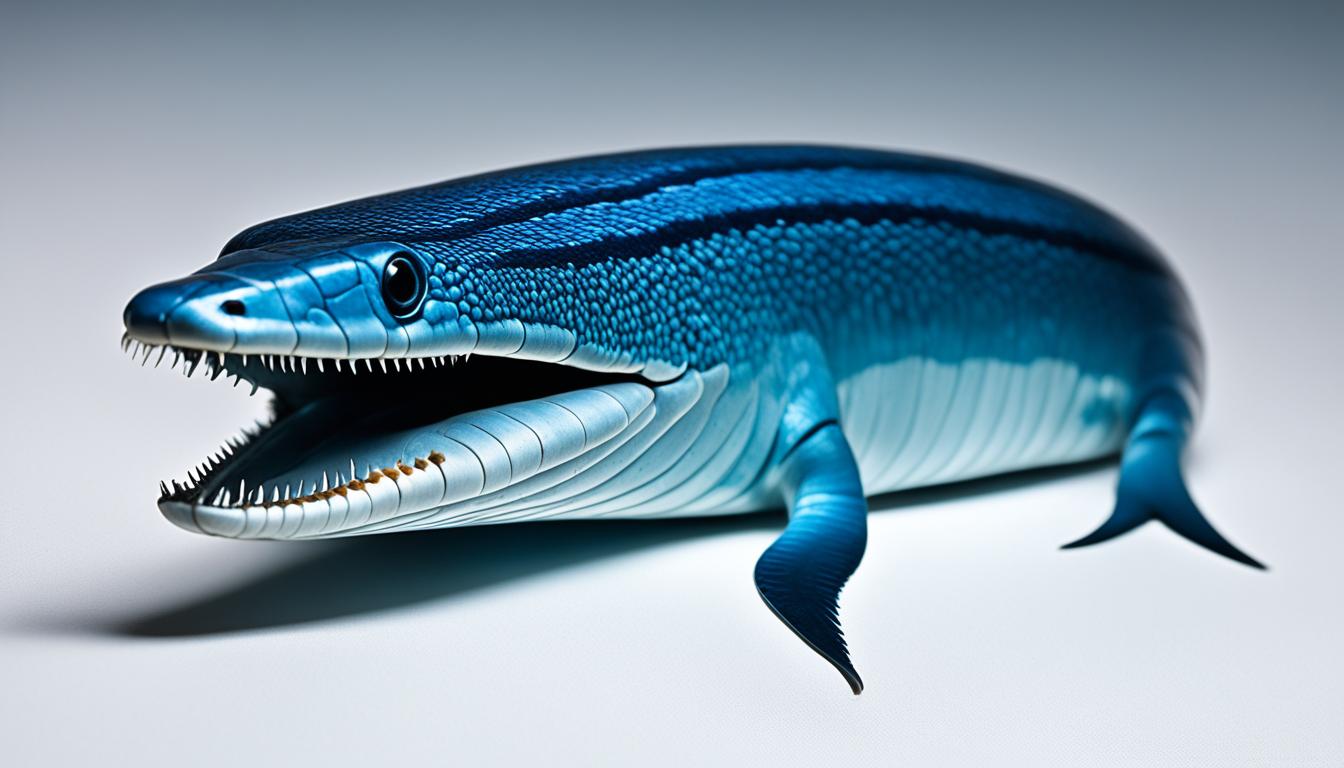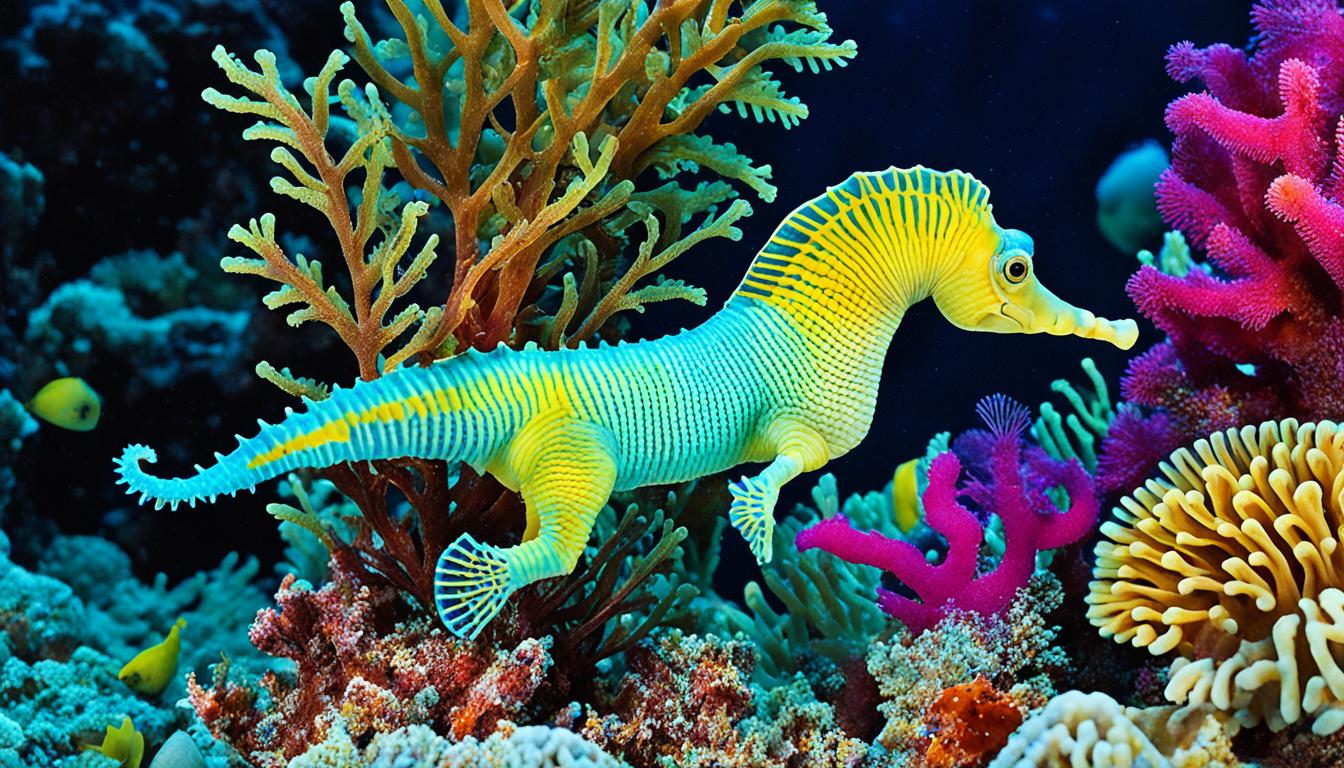Electric eels, known as Electrophorus electricus, are not true eels but fascinating fish. They belong to the order Gymnotiformes. You might ask, what are electric eels? These unique fish live in the muddy, dark waters of South America.
They have the amazing ability to generate electricity. This helps them navigate, hunt, and defend themselves. Electric eels can deliver shocks of up to 600 volts. This makes them fascinating to researchers and nature lovers.
Electric eels can grow between 6 to 8 feet long and weigh up to 44 pounds. Despite their electrical powers, they have poor eyesight. They use low-level electrical pulses to move through the murky waters. Learning about electric eels helps us appreciate life in our planet’s waters.
Introduction to Electric Eels
Exploring electric eels means looking into their unique biology and the myths around them. These creatures show us how they survive in the wild with their special anatomy and adaptations.
Overview of Their Biology
Electric eels live in shallow waters in the Amazon and Orinoco river basins. They have special features that help them breathe air and move through murky waters. Their bodies are long and thin, with a flat head and a long anal fin.
They have electrical organs that make up most of their body length. These organs help them stun prey like smaller fish and crustaceans. This shows how well they can live in low-oxygen environments.
Common Misconceptions About Electric Eels
Many people think electric eels are aggressive hunters. But, they mostly use electric shocks to defend themselves, not to catch prey. They stun their prey with precision, not to overpower them.
Some also think electric eels are part of the eel family. But, they are more like carp and catfish. Their electric shock works best on certain targets and conditions. These facts show how they adapt to their home.
What are electric eels?
Electric eels, known scientifically as Electrophorus electricus, are part of the Gymnotidae family and the Gymnotiformes order. They are known for their amazing ability to make electricity. This makes them very interesting to study. Let’s dive into their scientific classification and learn more about their names and facts.
Scientific Classification and Names
The electric eel’s scientific classification shows where it fits in the animal kingdom. It helps us understand its family and taxonomic position. They are often called “knifefish” or “puma fish” because of their shape and where they live. You can find electric eels in the freshwaters of Northern South America, like in Brazil, Colombia, Ecuador, and Peru.
Electric Eel Facts
Here are some key facts about electric eels:
- Electric eels can grow over 8 feet long.
- They can give off electrical shocks strong enough to stun bigger animals.
- Their electrical discharges have different voltages, used for finding food and hunting.
- These eels usually live about 15 years in the wild.
- They can be alone or in groups, depending on the situation.
Electric eels are important as top predators in their homes. They have few natural enemies. Their hunting habits, alone or in groups, help shape their place in nature.
| Feature | Details |
|---|---|
| Maximum Length | Over 8 feet |
| Average Lifespan | 15 years in the wild |
| Electric Shock Voltage | Varies from low pulses to high shocks |
| Geographical Range | Brazil, Colombia, Ecuador, Peru |
Electric Eel Behavior
Learning about electric eel behavior helps us understand their special ways and how they live with others. They have interesting ways of eating and socializing. This shows how they’ve adapted to live in their homes.
Feeding Habits and Diet
Electric eels eat smaller fish, amphibians, and crustaceans. Young electric eels start with invertebrates like freshwater shrimp and crabs. They need these to grow strong.
Their way of catching food is quite cool. Electric eels use electrical pulses to stun their prey before eating it. This helps them catch food in murky waters where they can’t see well. They use electrical signals to find and catch food, not their eyes.
Social Interactions and Group Dynamics
Electric eels are often thought of as loners, but they do have social sides. Sometimes, they come together in groups to hunt, making them more effective at catching food. These groups are temporary and mainly for hunting.
Even though they join forces, their social life is still pretty simple. They use electrical signals to talk to each other, not their eyes. This shows how they’ve learned to live and communicate in their underwater world.

Electric Eel Habitat
Understanding where electric eels live is key to seeing how they survive. These creatures live in the dark, slow-moving waters of the Amazon and Orinoco rivers. They thrive in places with low oxygen levels, which affects their eating and survival.
Physical Environment and Water Conditions
Electric eels call ox-bow lakes, streams, and flooded forests home. These places offer them shelter from predators and food. They need these specific conditions to survive. The ecosystems are rich in food, making them perfect for electric eels.
Geographic Range in South America
Electric eels live in many countries in northern South America. They can be found in Brazil, Colombia, Ecuador, Peru, Venezuela, and parts of the Guianas. These areas are rich in life and are near the Amazon and Orinoco rivers. Electric eels play a big role in their ecosystems.
Seasonal Changes in Habitat
Seasons change the electric eel’s home. The wet season brings more water, letting young eels explore new areas. The dry season traps them in small pools, making finding food harder. They must be careful to breathe air and avoid predators in these tight spaces.









